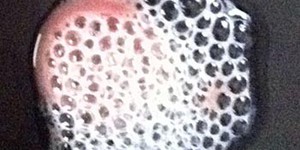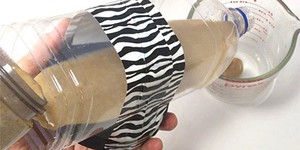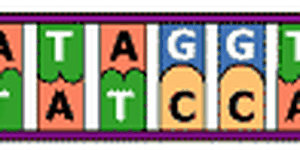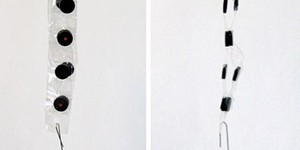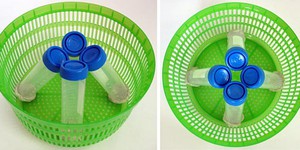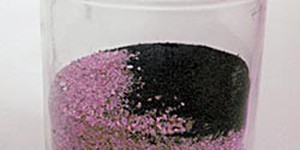Third Grade, Biotechnology Science Projects (8 results)
Yogurt, biofuel, biodegradable plastics, and antibiotics are all examples of products based on biotechnology research and manufacturing techniques. What else will we be able to create as we use biotechnology in new ways?
|
Select a resource
Sort by
|
All living things have DNA inside their cells. How do scientists extract the DNA from cells in order to study it? In this science experiment you can make your own DNA extraction kit from household chemicals and use it to extract DNA from strawberries.
Read more
Featured
Have you heard that garlic powder is supposed to inhibit the growth of bacteria? Which do you think would make a better disinfectant: a solution of garlic powder or a solution of bleach? This project shows you a straightforward way to compare the effectiveness of different disinfectants (or other antimicrobial agents), by measuring zones of inhibition on a culture plate.
Read more
Sometimes science can be really messy or use pretty disgusting ingredients. That is what it takes to understand how the world works, even if the experiment isn't pretty. Do you like chemical reactions that stink and ooze foamy bubbles? Do you think it sounds fun to make a super gross liver smoothie? Then this is the experiment for you!
Read more
New
Engineers are trying to tackle the world's ocean pollution problem using robots. Some robots, like Mr. Trash Wheel and the ship featured in this Mark Rober video, are stationary and collect trash as it flows out of rivers before it gets into the ocean. Others, like the Jellyfishbot, are mobile and can squeeze into narrower spaces to collect trash:
Can you build and test your own trash-skimming robot? If you do not have access to a natural body of water to test it in, you can use a bathtub or a…
Read more
How much iron is in your cereal? In this experiment, you will devise a way of testing foods for supplemental iron additives. Then you will use your design to test different breakfast cereals to see how much iron they contain. Which brand of cereal will have the most iron in it?
Read more
Do you like solving mysteries? In this experiment, you can find out how a DNA fingerprint can help you figure out whodunit. The answer might just be in the "sequence" of events!
Read more
How do scientists "copy" DNA? They use a process called the Polymerase Chain Reaction, or PCR. The key to making this process work is having a short piece of DNA, called a primer, that will stick to the larger piece of DNA you want to copy, called a template. In this science project, you will test how the number of matches and mismatches in a primer will affect its ability to stick, or anneal, to the DNA template during PCR.
Read more
New
Remembering to take medicine at the right time can be hard, especially if you need to take multiple medications at different times of day. It might not be a big deal if you forget to take your daily multivitamin, but for some people, forgetting to take medication at the right time can be dangerous. What if you had a device that could not only set off an alarm at the right time, but also automatically dispense the right pills for you? In this project, you will build an automatic medicine…
Read more
Imagine that you could make an important piece of laboratory equipment in your kitchen. With this science project idea, you can! You will create your own centrifuge out of a salad spinner and some putty. In science labs, centrifuges are used to separate different liquids and/or solids from each other. You can load your homemade centrifuge with samples and see how they separate. What
do you think happens to melted butter in a centrifuge?
Read more
Have you ever looked in the kitchen cupboard and found a container of tiny white grains, but you were not sure if they were sugar or salt? They look very similar. How could you tell them apart? Well, you know that sugar and salt taste very different. Taste is actually called a property, and properties are used to describe and identify different materials. Properties can also be used to physically separate things. In this science project, you will use different properties to create a way…
Read more
Ever used a pair of molecular scissors? Restriction enzymes are molecular scissors that cut DNA into pieces. Find out which enzymes will cut, and where by making a restriction map. Then you can figure out what will happen if you change the sequence of the DNA. Will the same enzymes still cut the new DNA sequence?
Read more
|
Explore Our Science Videos
Measure Static Electricity With An Electroscope!
Design a Seeding Machine
Make a Paper Lantern STEM Activity





